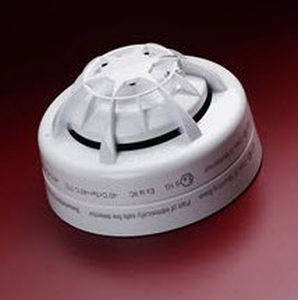
- Equipment
- Safety
- Boat detector
- Apollo Fire Detectors
Smoke detector ORB-OP-52027-APOfor boatoptical
Add to favorites
Compare this product
Characteristics
- Type
- smoke
- Application domain
- for boat
- Technology
- optical
Description
The Orbis I.S Optical Smoke Detector operates on the well established light scatter principle. The remarkable optical design of the Orbis I.S. optical smoke detector allows it to respond to a wide spectrum of fires.
The sensing chamber of the Orbis I.S. Optical Smoke Detector contains an optical sensor which measures back-scattered light. Sensitivity to black smoke is greatly improved.
The detector is calibrated so that it is highly reliable in detecting fires but is much less likely to genereate false alarms than ionisation smoke detectors.
The stability of the detector - high reliability, low false alarm rate - is further increased by the use of algorithms to decide when the detector should change to the alarm state. This removes likelihood of a detector producing an alarm as a result of smoke from smokung materials or from another non-fire source.
The sensing chamber has been designed to keep out dust and other airborne contaminatnts.
Environmental Characteristics
The operating temperature for instrinsically sage detectors is restricted by the gas temerature class. See technical data for full details.
Operating and storage temperature:
–40°C to +70°C
Operating temperature is restricted by
the intrinsic safety gas classification.
Class T5: –40°C to +45°C
Class T4: –40°C to +60°C
Technical Data
Principle of detection:
Photoelectric detection of light scattered by smoke parivles over a wide range of angles. The optical arrangement comprises an infra-red wmitter with a prism and a photo-diode at 90° to the light beam with a wide field of view. The detector's microprocessor uses algorithms to process the sensor readings.
Catalogs
No catalogs are available for this product.
See all of Apollo Fire Detectors‘s catalogs*Prices are pre-tax. They exclude delivery charges and customs duties and do not include additional charges for installation or activation options. Prices are indicative only and may vary by country, with changes to the cost of raw materials and exchange rates.



